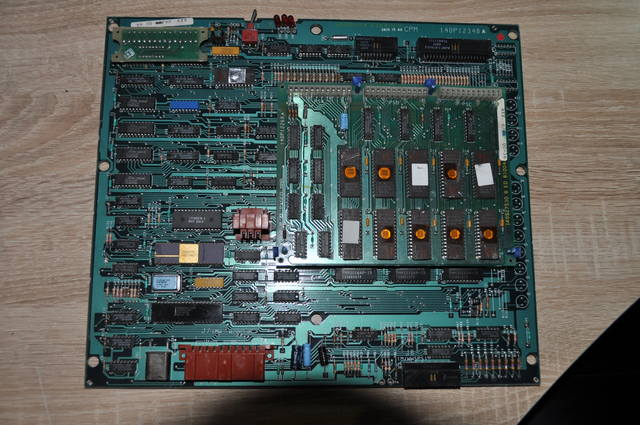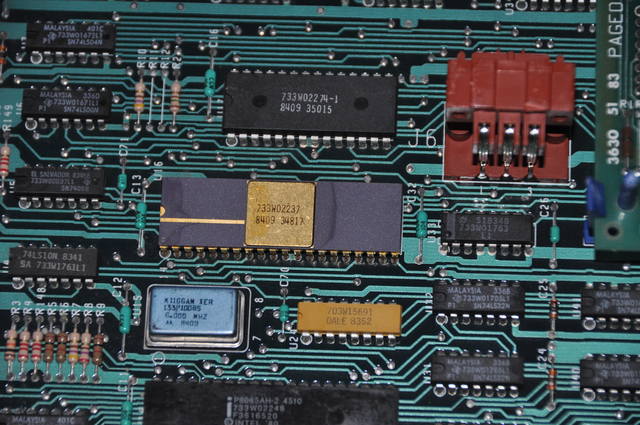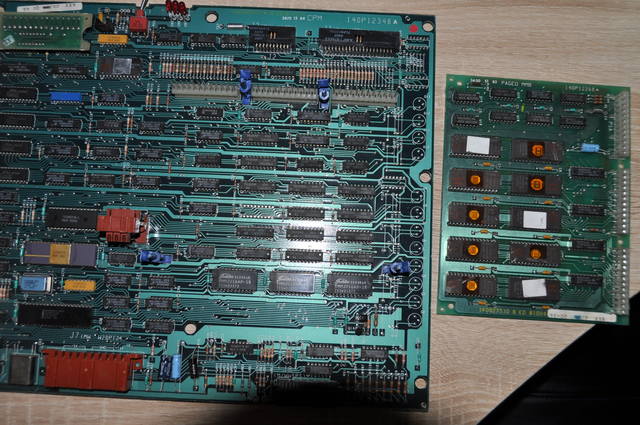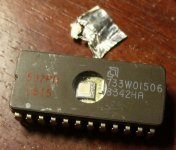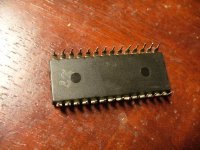Upcoming Events:
- VCF South West - June 14 - 16, Davidson-Gundy Alumni Center at University of Texas at Dallas
- VCF West - Aug 2 - 3, Computer History Museum, Mountain View, CA
- VCF Midwest - Sept 7 - 8 2024, Schaumburg, IL
- VCF SoCal - Mid February 2025, Location TBD, Southern CA
- VCF East - April 2025, Infoage Museum, Wall NJ
-
Please review our updated Terms and Rules here
You are using an out of date browser. It may not display this or other websites correctly.
You should upgrade or use an alternative browser.
You should upgrade or use an alternative browser.
Help identify old i8085 board (supposedly Xerox)
- Thread starter Tronix
- Start date
MikeS
Veteran Member
Possibly a printer; those ROMs might be Postscript.
Al Kossow
Documentation Wizard
Possibly a printer; those ROMs might be Postscript.
Not from Xerox in 1983 with an 8085 processor
Dumping the eproms might yield some useful strings
I can't tell from the picture if there are RS232 driver/receivers on the connector in the lower right.
The upper ones look like they are driving a peripheral interface
Tronix
Experienced Member
Unfortunately, they are soldered to the board.Dumping the eproms might yield some useful strings
Nope, his marking SN7406 and SP8404 (74LS08?), also I don't see USART IC on the boardI can't tell from the picture if there are RS232 driver/receivers on the connector in the lower right.
The upper ones look like they are driving a peripheral interface
Tronix
Experienced Member
Tronix
Experienced Member
Al Kossow
Documentation Wizard
Based on the board design and date, it probably came out of the division in El Segundo that did the Star (Xerox 8010)
I'm guessing it is the print engine control board for their small printer (Model 4045). I have some service
info that I haven't scanned, let me dig it out and see if I can find anything that looks like that.
nope, not a 4045
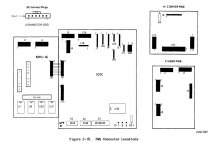
the other thing is the board has a lot of eprom, but not much ram which wouldn't make sense for a laser printer
the eproms don't seem to have any text strings in them
I'm guessing it is the print engine control board for their small printer (Model 4045). I have some service
info that I haven't scanned, let me dig it out and see if I can find anything that looks like that.
nope, not a 4045

the other thing is the board has a lot of eprom, but not much ram which wouldn't make sense for a laser printer
the eproms don't seem to have any text strings in them
Last edited:
Tronix
Experienced Member
the other thing is the board has a lot of eprom, but not much ram which wouldn't make sense for a laser printer
the eproms don't seem to have any text strings in them
Thanks. The first dump from 2716 EPROM looks like 8085 code, first bytes mean jump to 0100h, then interrupts vector table, then startup code from 0100h location... Yes, no text strings in dumps... And don't remind raster FONTs, perhaps data bits and/or adress lines are bitstucked, i don't know...
So, PCB has two types of RAM - four TC5501P IC (256x4 sram) - 512 bytes total, and three TMM2016AP (2048x8 sram) - 6 Kb total. Also, IC marked 733W02274-1 near gold ceramic 40-pin controller look like 16/32 Kb SRAM, or maybe OTP EPROM. I try to desolder it and determine its purpose.
I plan to disassemble the board for spare 74LSxxx parts.
MikeS
Veteran Member
Not from Xerox in 1983 with an 8085 processor
It was just a wild guess; I scrapped a printer years ago (Xerox IIRC, could have been NEC) with a similar size board and a daughterboard with 8 or 10 EPROMs containing the Postscript interpreter.
Al Kossow
Documentation Wizard
It was just a wild guess; I scrapped a printer years ago (Xerox IIRC, could have been NEC) with a similar size board and a daughterboard with 8 or 10 EPROMs containing the Postscript interpreter.
in that time frame Adobe only had 68000 Postscript, and Xerox would NEVER have used it, since they had their own horse in the race (Interscript)
Tronix
Experienced Member
Tronix
Experienced Member
Chuck(G)
25k Member
Both are most likely custom parts.
Good luck in finding datasheets.
Good luck in finding datasheets.
Tronix
Experienced Member
Both are most likely custom parts.
Good luck in finding datasheets.
Yes, its ASIC from Semiconix (SMX Semiconductor GOLD CHIP TECHNOLOGY™). Xerox located in Palo Alto, SMX in Santa Clara, California, so they are neighbors.
Unfortunately, the chips are sent to the shelf, without the possibility of use in my homebrew CPU devices.
Chuck(G)
25k Member
Problem is that the chips are dated 1984 and Semiconix has been in existence only since 1999. I suspect that the story is a bit more complex. Could possibly be HTE Labs, but that's cutting it close.
Dwight Elvey
Veteran Member
They all seem to start with 733W I suspect the 733 may be a model number.
Dwight
Dwight
MikeS
Veteran Member
You're right of course, it had a 68000 and was probably a NEC after all. Should have looked more closely but that ROM board looked very similar.in that time frame Adobe only had 68000 Postscript, and Xerox would NEVER have used it, since they had their own horse in the race (Interscript)

